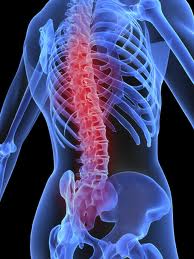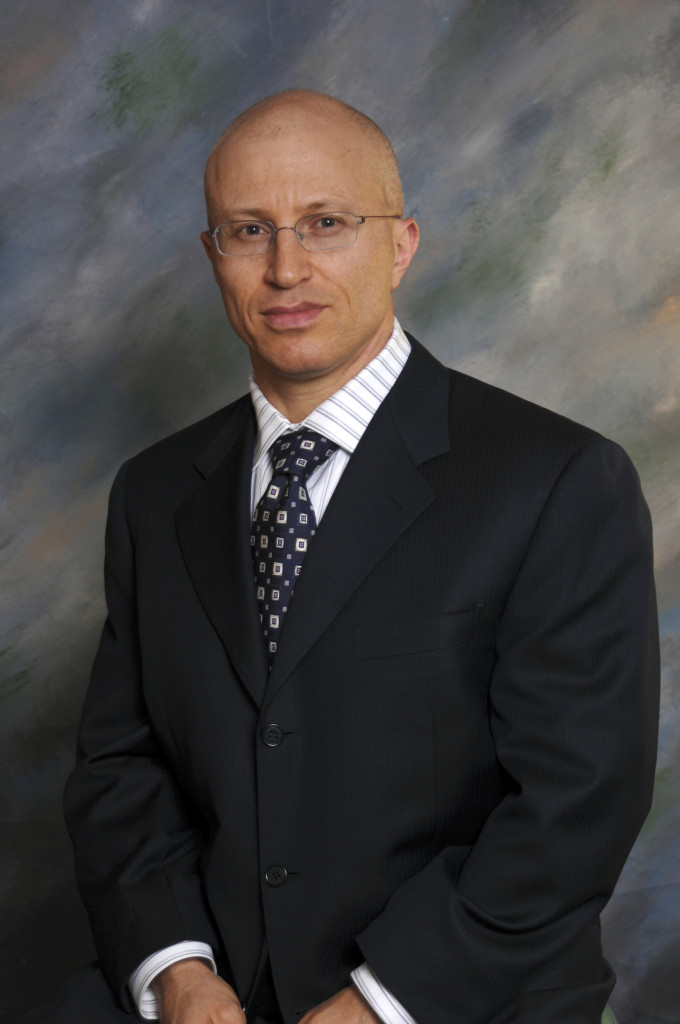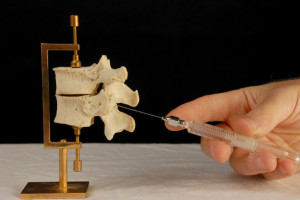Symptoms of scoliosis most commonly become apparent just before puberty–but that doesn’t mean adults can’t be affected. Sometimes, undiagnosed scoliosis can fail to resolve itself during puberty, leading to pain and other issues in adults. More rarely, scoliosis can develop in adults. Here’s what grown-ups need to know about this condition.
What it is
Scoliosis is an abnormal curvature of the spine. It’s usually idiopathic, meaning in most cases there is no known cause, but can be caused by neuromuscular disorders, abnormal fetal development, uneven legs, and has been correlated with exercise, poor posture and other behavioral factors. It’s more likely to become serious in women, and more likely in those with a close family member suffering from the condition.
Symptoms
The same visual cues that are used to spot scoliosis in children may be present in adults, i.e. uneven shoulders, one shoulder blade or hip being much more prominent than the other, head not centered above the spine, etc. The one that tends to bring grown-ups to the waiting room, however, is less common in kids–back pain. Back pain can be caused by many conditions, some of which may be present along with scoliosis. A standard examination can spot more severe or developed cases of scoliosis, while an MRI can help identify milder cases.
Treatment
Medication: Medication can treat the painful symptoms of scoliosis. Usually, over the counter painkillers, such as ibuprofen, is the first line of defense, followed by prescribed painkillers if necessary. Local anesthetic or corticosteroid injections may also be used as a short-term solution. If bone degeneration caused by osteoporosis is contributing the back pain, bone strengthening medications, vitamins, and supplements may also be prescribed.
Exercise: Often, exercise is prescribed as a means of helping patients control their weight, which in turn can lessen the stress on their backs–an important step to keep from exacerbating the condition. Corrective exercises to correct weaknesses or imbalances contributing to the development of scoliosis may also be helpful.
Braces and Other Medical Devices: Back braces are occasionally prescribed for adults with scoliosis. Lifts may be used to help in cases where uneven leg lengths are contributing to the condition’s development.
Surgery: Surgery is recommended only for very severe cases of scoliosis. There are two kinds of surgery used to treat most cases of adult scoliosis: decompression surgery, and spinal fusion surgery. Decompression surgery is used to remove a disk or bone pressing down on a nerve. Spinal fusion surgery is used to improve the shape of the spine using rods, plates, screws, and later, bone grafts.
Request an Appointment
Advanced Orthopedics and Sports Medicine Institute offers comprehensive treatment plans, including pain management, physical therapy, surgery, and more. Request an appointment to begin treating you back pain.
 Back pain is one of the most frequently-reported issues among patients visiting doctor’s offices. In fact, back problems are the second most-common reason patients visit medical practitioners. At Advanced Orthopedics and Sports Medicine Institute, our orthopedic specialists each specialize in care and treatment for specific parts of the body. The back is among those most commonly studied and treated at our practice.
Back pain is one of the most frequently-reported issues among patients visiting doctor’s offices. In fact, back problems are the second most-common reason patients visit medical practitioners. At Advanced Orthopedics and Sports Medicine Institute, our orthopedic specialists each specialize in care and treatment for specific parts of the body. The back is among those most commonly studied and treated at our practice.
Back pain is a problem many of our patients face, but not everyone who suffers from intermittent or even chronic back pain can trace the condition back to the same cause. There is a wide array of potential sources of back pain, each of which demands a unique solution from a medical perspective. One of the most common and straightforward causes of back pain is injury or trauma. This can be either a single episode or a repetitive injury that subjects the spine to force and pressure. Degeneration is another common cause that leads to ordinary wear and tear on the spine, discs, and other joints over the years. Autoimmune disorders can cause back conditions through inflammation, during which the body’s blood cells attack the joints in the spine, causing pain and stiffness. Many more specific conditions, such as degenerative disk disease, spondylosis, herniated disks, and scoliosis, can also be the source of back problems. AOSMI’s online resources help patients suffering back pain get informed, and its team of specialists restore function, comfort, and mobility to back pain patients every day.

AOSMI ‘s Dr. Goldberg has received excellent reviews from patients that he treated. The reviews for the orthopedic surgeon on RateMDs.com highlight his skill and professionalism.
D.r Goldberg specializes in spine surgery with training at the Leatherman Spine Institute. He is particularly interested in degenerative diseases of the cervical and lumbar spine, tumors, fractures, infections and scoliosis.
Minimally Invasive Spine Surgery is a specialty of Dr. Goldberg’s. He has a vast amount of experience with this surgery, helping patients to recover as quickly as possible with minimal muscle damage.
See the reviews for Dr. Goldberg on RateMDs.com below and visit our Testimonials page to hear more of what his patients have to say about their experiences.
Here at Advanced Orthopedics and Sports Medicine we work with individuals suffering from all kinds of musculoskeletal strain and nerve issues, including those sustained at work. Here are some postural tips that may help:

Check your stance. Use a full-body mirror to see if your shoulders, for example, are at equal heights, and that your profile shows ankles, knees, hips, shoulders and ear form a nice straight vertical line.
Sit ergonomically. Make sure your feet are both flat on the floor and that your spine is supported by the chair cushion. Your hands should be able to reach straight forward for the keyboard and mouse without strain.
Prioritize your office items. If you are constantly reaching for a frequently-used file cabinet or inbox, you may be straining your shoulders, back and neck needlessly. Set up your office so that these items are right next to you at all times.
Adjust your monitor. Many people strain their necks, shoulders and eyes because they use a monitor positioned too low for comfort.
Hurting at Work? Get Evaluated.
If you are still not sure what is causing your distress, visit out clinic for an evaluation. We can check your posture and spinal alignment, isolate any underlying imbalances, and advise you on how you can enjoy a more pain-free working life.
 Did you know that the word “epidural” literally means “around the spinal cord?” Most have heard the term and have been programmed to immediately think of childbirth. Few understand the enormous relief epidural injections can have on back injuries and chronic pain.
Did you know that the word “epidural” literally means “around the spinal cord?” Most have heard the term and have been programmed to immediately think of childbirth. Few understand the enormous relief epidural injections can have on back injuries and chronic pain.
The orthopedic specialists at Advanced Ortho Sports have undergone extensive training in the use of epidural steroid injections. Our specialists will use targeted spinal injections to diagnose and treat your spinal time. These injections to the mid or lower back often work to prevent patients from needing more aggressive surgical treatments. These injections are performed onsite by our board certified New Jersey orthopedic surgeons. There’s no prolonged recovery period. Results and relief can often be felt the same day. Additionally, there aren’t scars or wounds.
What to know more about epidural spine injections? Here are the important details.
Epidural Spinal Injection Procedure:
- The skin will be cleaned and injected with a numbing agent.
- Our orthopedic specialist will insert a needle through the skin, toward the spine.
- An machine will produce an x-ray video called a fluoroscopy. This is how the doctor will know where to move the needle.
- A contrast dye will be injected to allow the doctor to be sure the needle is in the right place.
- Once the needle is in position, the doctor will inject a steroid solution into the epidural space. This will likely cause rapid relief.
Call one of our specialists today for further information, or to schedule a consultation.








